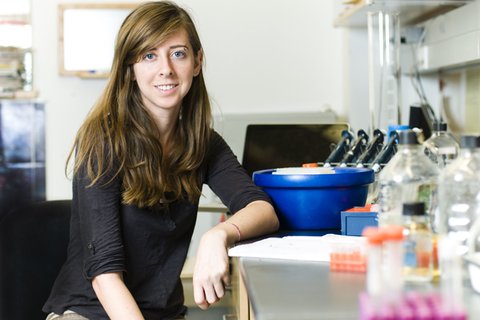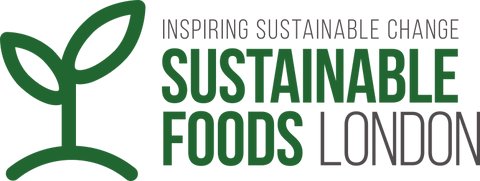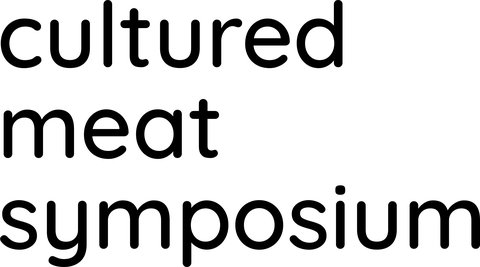Cellular Agriculture Curriculum: Feeding Two Birds with One Scone
November 3, 2021 - 9 min read
This is a Student Essay Contest 2021 runner-up. Molly Gordon is a PhD candidate in Cell Biology at Johns Hopkins University.
Coffee was demonized when it was first introduced in Europe in the seventeenth century, gaining the nefarious moniker of “Satan’s Drink” (Pendergrast, 1999). The extreme reaction to this bean percolated to some of the most scrutinous legislature to ever regulate a beverage. This is hard to imagine with a Starbucks, Dunkin’ Donuts, or niche coffee shop peppering nearly every street in major cities. Despite its bitter introduction, coffee has led to the creation of novel industries, countless job opportunities, and dissemination of ideas as people gather to converse over a cup of Joe. As outlined in his book, Innovation and Its Enemies, Dr. Calestous Juma emphasizes that society tends to initially resist innovations. From the use of margarine to the development of highly sophisticated artificial intelligence, society continually repeats this trend of opposition to eventual acceptance followed by enthusiastic embrace (Juma, 2016). This concept is imperative to understand now more than ever as we are currently experiencing a period of hypergrowth in sustainable food technology considering the reality that food production must increase over 70% by 2050 to meet the current rate of population growth. Regardless of how fast technological advances can meet these demands, we need to overcome the bottleneck associated consumer hesitancy for these future food sources to reach their highest potential.
One of the most promising technical advances in sustainable food security is cellular agriculture, producing animal-based products from cultured animal cells independent of traditional factory farming. According to the 2021 Life Cycle Assessment prepared by CE Delft, when compared to chicken farming, which is the most efficiently farmed meat, cellular agriculture has the potential to reduce the carbon footprint and land use by 17% and 63%, respectively (Sinke & Odegard, 2021). The field of cellular agriculture has grown exponentially since the early 2010s when the world witnessed the consumption of first cultivated hamburger (Fountain, 2013). Since then, many of the challenges associated with this technology have been identified and tremendous strides have been made in the research and development sector of cellular agriculture. For example, the exorbitant cost of growth medium to feed the cells and allow growth at scale has been estimated to be cost-competitive with meat production with relatively few achievable alterations to several of the media components (Specht, 2020). However, to reach the goal of a world fed mainly by sustainable alternative protein sources such as cellular agriculture, it is pivotal to extend equal efforts towards improving consumer perception prior to commercial availability. One major reason for the drastic response to novel technology is influence from incumbent industries, which is difficult to mitigate due to the vast financial resources at their disposal. An independent source of consumer hesitancy comes from an inherent lack of knowledge surrounding the new technology, which can be directly targeted by improvements in formal and informal educational outreach efforts surrounding these innovations. Universities worldwide have untapped potential to address this critical issue by establishing dedicated courses and resources to propel the field of cellular agriculture forward not only in the research and industry spheres but also in consumer exposure and concomitantly their spread of opinions into the general public.
The field of cellular biology is intimately linked with cellular agriculture and as such this technology can and should be incorporated into science curricula as early as possible to improve public perception of this future food source. In the United States, only few select universities, such as those that have extensive resources and are well-connected, offer courses on alternative proteins sources such as cellular agriculture. Furthermore, several of the currently available courses are developed and lead by self-taught, highly motivated students with scarce resources and as such can only scratch the surface of this rapidly evolving field. Universities should focus their efforts on immediately incorporating cellular agriculture curriculum into existing majors with the eventual goal of establishing entirely new majors and even new departments. Achieving this goal is mutually beneficial as universities will also profit by becoming leaders in the field of cellular agriculture and attracting many enthusiastic professors, researchers, and students to their campuses to staff the new departments. As such, any effort universities take toward introducing cellular agriculture courses has the potential to positively impact the academic ecosystem of the university.
The benefits of hands-on research-based courses dedicated to cellular agriculture are multi-faceted, having impacts on students’ academic development, perception, and dissemination of knowledge as potential consumers, as well as the expansion and evolution of research and development sector of this industry. Official universities courses on cellular agriculture benefit students’ immediate academic development as well as their long-term career prospectuses. Courses centered on cellular agriculture are intimately linked to many disciplines like traditional sciences courses such as cellular and molecular biology, biochemistry and physics but also draws heavily on tangential fields such as nutritional and environmental sciences, bioethics, economics, and sociology to name a few. The multi-disciplinary aspect of this technology opens the potential for inter-departmental collaborations within universities, which can extend beyond the context of the classroom into potential research collaborations. Courses should also have complementary hands-on laboratory components, which would exponentially increase the benefit to students as they gain experience directly applicable to industry job positions such as basic skills surrounding cell culture, scaffolding, and bioreactors. Industry partners could guest lecture on these laboratory techniques, inciting interest in cellular agriculture careers as well as creating direct pipelines for networking for students who may become future employees. Finally, cellular agriculture courses should implement non-traditional assignments such as grant writing or business pitches as formal evaluation tools which will not only function towards developing students’ writing and critical thinking skills but also propel the industry forward with novel ideas and a steady flow of funding.
Superficially, students gain direct exposure to how cellular agriculture technology works, which will spark curiosity and openness to trying new products. It is expected that students will informally disseminate information to friends and family, further inciting consumer curiosity. Students are influential actors both within the academic ecosystem and local communities extending beyond the university. As such, the benefits of incorporating cellular agriculture at the undergraduate level will extend beyond the college campus and has strong potential to influence wider reaching consumer perception towards cellular agriculture. The dissemination of information should also be formally incorporated into the curriculum via at least two distinct mechanisms. First, students could create and execute a community course on cellular agriculture in public shared science spaces. Indeed, research supports that peer-teaching positively impacts the opinion of course participants related to controversial socioscientific topics (Chrispeels et al., 2019). A second method for spreading information to a public audience involves the use of social media platforms such as creating blogs posts or podcasts on topics covered in college courses. Students could share these pieces on social media platforms to stimulate thoughtful conversations surrounding cellular agriculture among their peers, friends, and family. Ideally, these public discussions would contribute to counteracting the spread of misinformation online by drawing on inoculation and “pre-bunking” theories, which posit that exposing people to misinformation before it spreads virally through online media acts as protection from future exposure to the false content (Lewandowsky & Linden, 2021). Overall, cellular agriculture courses combined with student-led outreach efforts will contribute to increased consumer awareness via both direct and indirect pipelines.
The positive effects of incorporating cellular agriculture into undergraduate curriculum will be felt immediately at the industry level as well. Perhaps most importantly, the effort to educate students on cellular agriculture and as a result influence their potential career decisions means that the industry will have better control on increasing the diversity entering the workforce within this industry. This is especially true if courses are introduced in a nonexclusive manner among different types of universities such as R1 universities, primarily undergraduate institutions, community colleges, and historically black colleges and universities. Additionally, industry partners gain unique advertising opportunities among students by agreeing to assist in courses where they can bring their products for live demonstrations. Students and professors can also provide feedback for these companies that can even be collected through formal evaluation tools and used to improve their merchandise. Furthermore, partnering with universities has the potential for financial benefits if industry personnel lead hands on demonstrations or guest lecture within the courses. For example, companies can leverage these efforts as evidence of broader impact within the mission of their businesses, which has become increasingly important while applying for external funding sources. Another financial benefit includes a pipeline for becoming a permeant supplier of laboratory equipment or even cellular agriculture products once they become commercially available for these universities. As such, the creation of courses on cellular agriculture will also positively impact the state of the industry in a mutually beneficial relationship.
To ensure that the general population will enthusiastically embrace cellular agriculture products both before and after they are made publicly available worldwide, we need to focus on increasing exposure to this topic from primary to post-secondary education. The vast influence and untapped potential that universities hold in this sphere cannot be ignored as these universities can collectively benefit students, improve consumer perception, and elevate industry standards in the field of cellular agriculture. As such, establishing robust, centralized resources for cellular agriculture curricula kills two birds with one stone (or the more animal friendly idiom, feeds two birds with one scone) by propelling many different aspects of cellular agriculture forward and directly contributing towards a realistic solution to the impending food shortage. And hopefully, one day in the near future, people will gather and continue to spread ideas for novel innovations over a cup of coffee produced through cellular agriculture (VTT News, 2021).
References
Chrispeels, H. E., Chapman, J. M., Gibson, C. L., & Muday, G. K. (2019). Peer Teaching Increases Knowledge and Changes Perceptions about Genetically Modified Crops in Non–Science Major Undergraduates. CBE—Life Sciences Education, 18(2).
Fountain, H. (2013). A Lab-Grown Burger Gets a Taste Test. The New York Times. https://www.nytimes.com/2013/08/06/science/a-lab-grown-burger-gets-a-ta…
Juma, C. (2016). Innovation and Its Enemies: Why People Resist New Technologies. In Economist (Vol. 378, Issue 8460). Oxford University Press.
Lewandowsky, S., & Linden, S. van der. (2021). Countering Misinformation and Fake News Through Inoculation and Prebunking. European Review of Social Psychology.
Pendergrast, M. (1999). Uncommon Grounds: The History of Coffee and How It Transformed Our World (B. Books (Ed.)).
Sinke, P., & Odegard, I. (2021). LCA of cultivated meat. Future projections for different scenarios. CE Delft. https://cedelft.eu/publications/rapport-lca-of-cultivated-meat-futurepr…
Specht, L. (2020). Cultivated meat: Cell culture medium costs. The Good Food Institute. https://gfi.org/wp-content/uploads/2021/01/clean-meat-production-volume…
VTT News. (2021). Sustainable coffee grown in Finland. https://www.vttresearch.com/en/newsand-ideas/sustainable-coffee-grown-f…


















